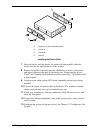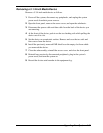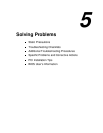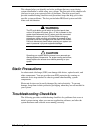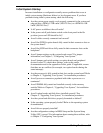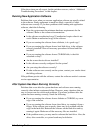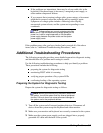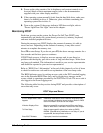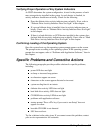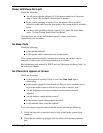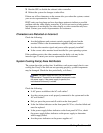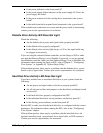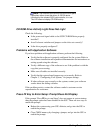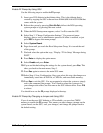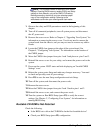
5-6 Solving Problems
4. Power up the video monitor. Set its brightness and contrast controls to at
least two-thirds of their maximum ranges (refer to the documentation
supplied with your video display monitor).
5. If the operating system normally loads from the hard disk drive, make sure
there is no diskette in drive A. Otherwise, place a diskette containing the
operating system files in drive A.
6. Turn on the system. If the power indicator LED does not light, refer to
“Power Light Does Not Light” later in this chapter.
Monitoring POST
Each time you turn on the system, the Power-On Self-Test (POST) runs
automatically and checks the system board, processor(s), memory, keyboard,
and most installed peripheral devices.
During the memory test, POST displays the amount of memory it is able to
access and test. Depending on the amount of memory, it may take several
minutes to complete the memory test.
Press
F2
to enter Setup. If you do not press
F2
, the above message remains for a
few seconds and the boot process continues.
If POST finds an error, it displays an error message and, in case there is a
problem with the display, puts out a series of long and short beeps. Write down
any beep code emitted. This information is useful to your service representative
and should be reported to your service representative.
Refer to “BIOS User’s Information” at the end of this chapter for a list of items
to check for each error code and for an explanation of the error beep codes.
The BIOS indicates errors by writing an error code to the PS/2-standard logging
area in the Extended BIOS Data Area, and by displaying a message on the
screen, which is sometimes preceded by the POST Error Code. The error code is
also logged to the Event Logging area.
The following table lists keys active during POST and provides a description of
errors that may occur.
POST Keys and Errors
Action/Message Description
If POST Beeps Before Video
Appears
Initialization failed before video initialized. Most beep code
errors are fatal; initialization cannot continue. Refer to “BIOS
User’s Information” at the end of this chapter.
If Monitor Displays Error Note error; press
F1
to continue boot or
F2
to enter Setup.
Refer to “BIOS User’s Information” at the end of this chapter.
To Enter Setup Setup changes specific options, then writes to CMOS,
NVRAM. Press
F2
during initialization to run Setup. If you do
not press
F2
, the boot process continues.
Enter BOOT Diskette If prompted, insert the boot diskette.



